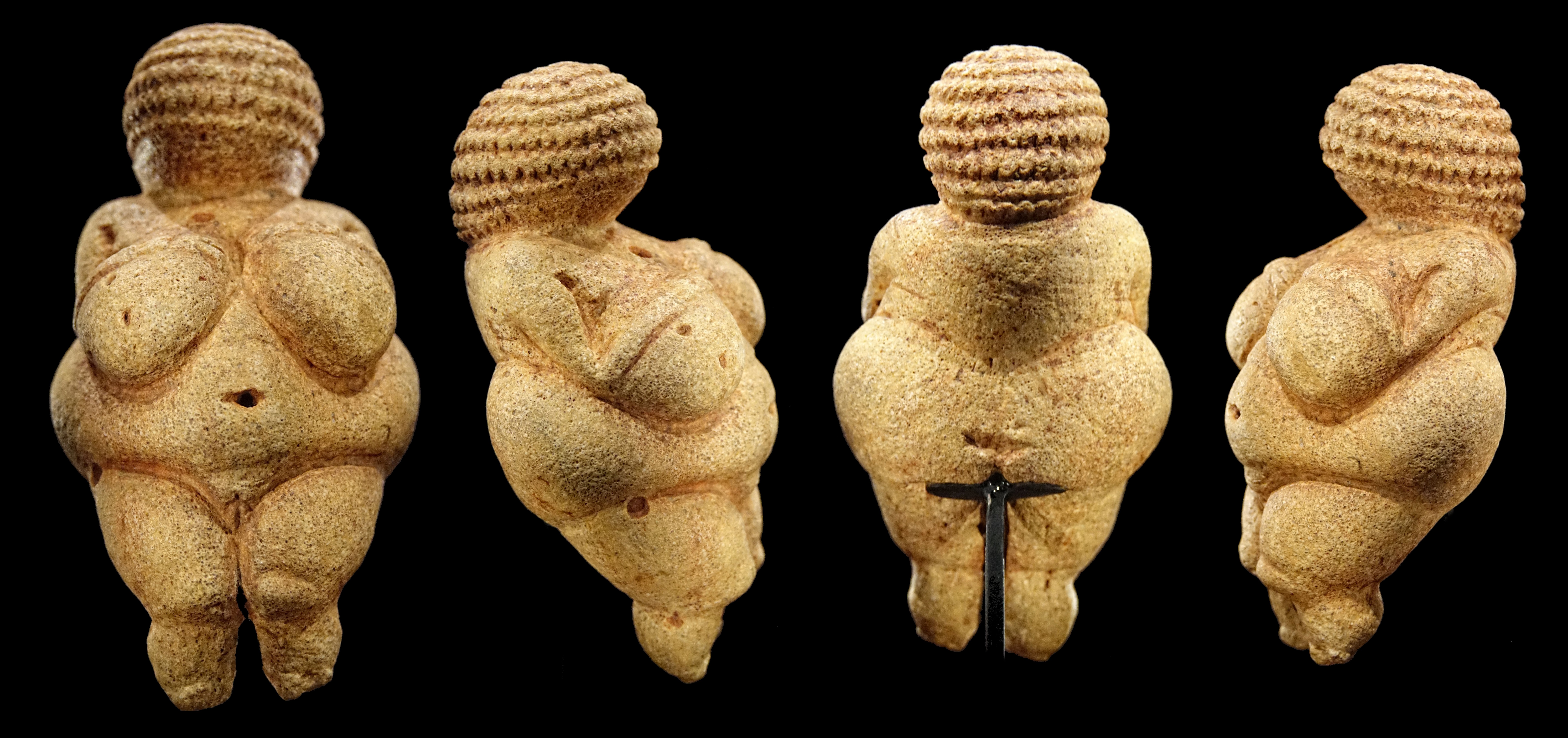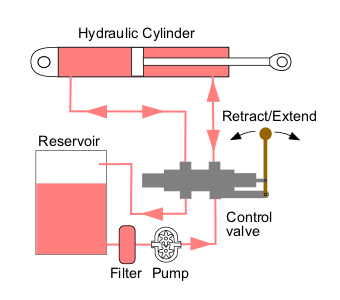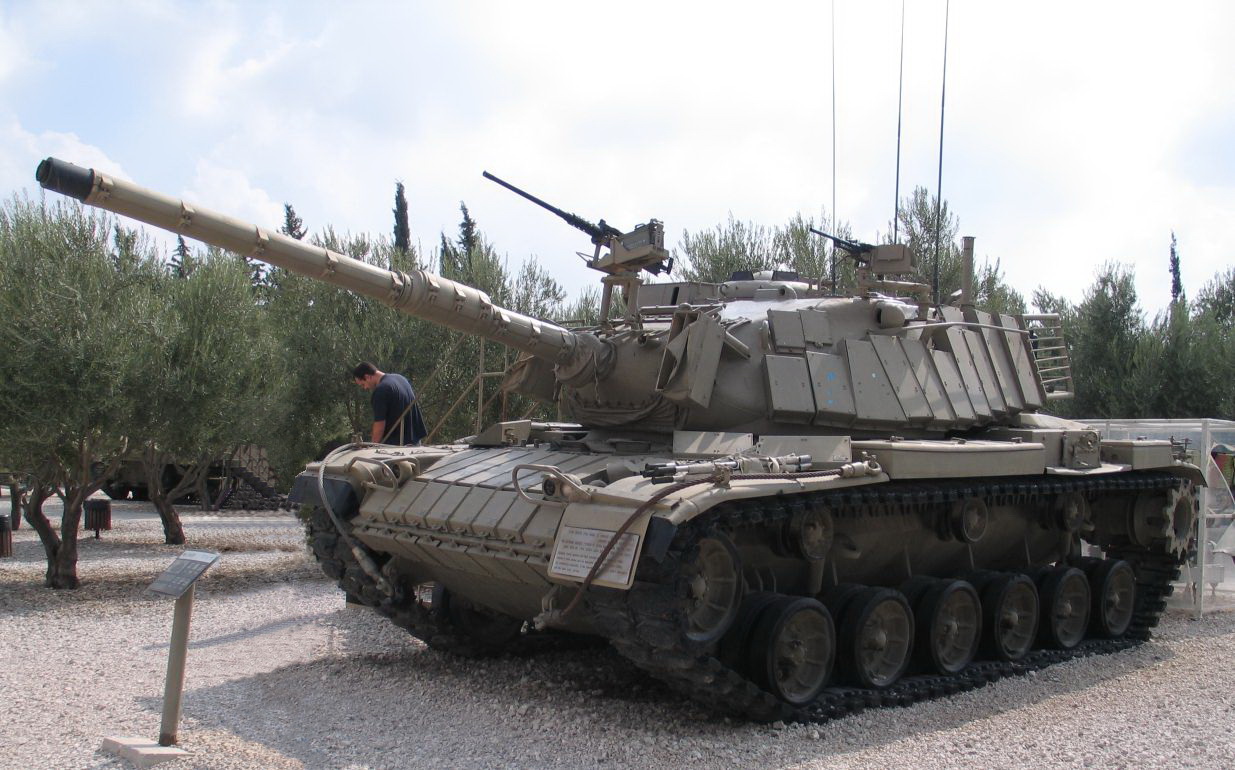|
Object 490A
The Obiekt 490A "Rebel" (Russian: Объект 490А Бунтарь), or Object 490A, was a Soviet experimental main battle tank developed between 1981 and 1982. Only two prototypes were ever produced, neither of which were capable of firing due to time constraints. Neither of the vehicles were completed before their production was ceased. Design The Object 490A was created as an alternative variant for the Object 490. The 490A Buntar was suggested in order to provide the vehicle with one more crew member as well as an externally mounted gun. The biggest change from the Object 490 to the 490A was the completely redesigned turret as well as minor changes to the chassis. The project was cancelled at the end of 1984 due to the newer Object 477 Molot program beginning. The tank is considered to be a vehicle ahead of its time, as it utilized multiple new technologies in order to stay ahead of the competition. Armor The armor consisted of a layer of steel followed by composite armor ... [...More Info...] [...Related Items...] OR: [Wikipedia] [Google] [Baidu] |
Main Battle Tank
A main battle tank (MBT), also known as a battle tank or universal tank, is a tank that fills the role of armor-protected direct fire and maneuver in many modern armies. Cold War-era development of more powerful engines, better suspension systems and lighter-weight composite armor allowed the design of a tank that had the firepower of a super-heavy tank, the armor protection of a heavy tank, and the mobility of a light tank, in a package with the weight of a medium tank. Through the 1960s and 1970s, the MBT replaced almost all other types of tanks, leaving only some specialist roles to be filled by lighter designs or other types of armored fighting vehicles. Main battle tanks are a key component of modern armies. House (1984), ''Toward Combined Arms Warfare: A Survey of 20th-Century Tactics, Doctrine, and Organization'' Modern MBTs seldom operate alone, as they are organized into armoured units that include the support of infantry, who may accompany the tanks in infant ... [...More Info...] [...Related Items...] OR: [Wikipedia] [Google] [Baidu] |
Ceramic
A ceramic is any of the various hard, brittle, heat-resistant and corrosion-resistant materials made by shaping and then firing an inorganic, nonmetallic material, such as clay, at a high temperature. Common examples are earthenware, porcelain, and brick. The earliest ceramics made by humans were pottery objects (''pots,'' ''vessels or vases'') or figurines made from clay, either by itself or mixed with other materials like silica, hardened and sintered in fire. Later, ceramics were glazed and fired to create smooth, colored surfaces, decreasing porosity through the use of glassy, amorphous ceramic coatings on top of the crystalline ceramic substrates. Ceramics now include domestic, industrial and building products, as well as a wide range of materials developed for use in advanced ceramic engineering, such as in semiconductors. The word "'' ceramic''" comes from the Greek word (), "of pottery" or "for pottery", from (), "potter's clay, tile, pottery". The earliest k ... [...More Info...] [...Related Items...] OR: [Wikipedia] [Google] [Baidu] |
Trial And Research Tanks Of The Soviet Union
In law, a trial is a coming together of parties to a dispute, to present information (in the form of evidence) in a tribunal, a formal setting with the authority to adjudicate claims or disputes. One form of tribunal is a court. The tribunal, which may occur before a judge, jury, or other designated trier of fact, aims to achieve a resolution to their dispute. Types by finder of fact Where the trial is held before a group of members of the community, it is called a jury trial. Where the trial is held solely before a judge, it is called a bench trial. Hearings before administrative bodies may have many of the features of a trial before a court, but are typically not referred to as trials. An appeal (appellate proceeding) is also generally not deemed a trial, because such proceedings are usually restricted to a review of the evidence presented before the trial court, and do not permit the introduction of new evidence. Types by dispute Trials can also be divided by the type ... [...More Info...] [...Related Items...] OR: [Wikipedia] [Google] [Baidu] |
Main Battle Tanks Of The Cold War
Main may refer to: Geography * Main River (other) **Most commonly the Main (river) in Germany *Main, Iran, a village in Fars Province *"Spanish Main", the Caribbean coasts of mainland Spanish territories in the 16th and 17th centuries *''The Main'', the diverse core running through Montreal, Quebec, Canada, also separating the Two Solitudes *Main (lunar crater), located near the north pole of the Moon *Main (Martian crater) People and organisations * Main (surname), a list of people with this family name *Ma'in, alternate spelling for the Minaeans, an ancient people of modern-day Yemen *Main (band), a British ambient band formed in 1991 * Chas. T. Main, an American engineering and hydroelectric company founded in 1893 *MAIN (Mountain Area Information Network), former operator of WPVM-LP (MAIN-FM) in Asheville, North Carolina, U.S. Ships * ''Main'' (ship), an iron sailing ship launched in 1884 * SS ''Main'', list of steamships with this name * ''Main'' (A515), a modern ... [...More Info...] [...Related Items...] OR: [Wikipedia] [Google] [Baidu] |
Cold War Tanks Of The Soviet Union
Cold is the presence of low temperature, especially in the atmosphere. In common usage, cold is often a subjective perception. A lower bound to temperature is absolute zero, defined as 0.00K on the Kelvin scale, an absolute thermodynamic temperature scale. This corresponds to on the Celsius scale, on the Fahrenheit scale, and on the Rankine scale. Since temperature relates to the thermal energy held by an object or a sample of matter, which is the kinetic energy of the random motion of the particle constituents of matter, an object will have less thermal energy when it is colder and more when it is hotter. If it were possible to cool a system to absolute zero, all motion of the particles in a sample of matter would cease and they would be at complete rest in the classical sense. The object could be described as having zero thermal energy. Microscopically in the description of quantum mechanics, however, matter still has zero-point energy even at absolute zero, becaus ... [...More Info...] [...Related Items...] OR: [Wikipedia] [Google] [Baidu] |
Power-to-weight Ratio
Power-to-weight ratio (PWR, also called specific power, or power-to-mass ratio) is a calculation commonly applied to engines and mobile power sources to enable the comparison of one unit or design to another. Power-to-weight ratio is a measurement of actual performance of any engine or power source. It is also used as a measurement of performance of a vehicle as a whole, with the engine's power output being divided by the weight (or mass) of the vehicle, to give a metric that is independent of the vehicle's size. Power-to-weight is often quoted by manufacturers at the peak value, but the actual value may vary in use and variations will affect performance. The inverse of power-to-weight, weight-to-power ratio (power loading) is a calculation commonly applied to aircraft, cars, and vehicles in general, to enable the comparison of one vehicle's performance to another. Power-to-weight ratio is equal to thrust per unit mass multiplied by the velocity of any vehicle. Power-to-weight ... [...More Info...] [...Related Items...] OR: [Wikipedia] [Google] [Baidu] |
Hydraulic Drive System
Hydraulic machines use liquid fluid power to perform work. Heavy construction vehicles are a common example. In this type of machine, hydraulic fluid is pumped to various hydraulic motors and hydraulic cylinders throughout the machine and becomes pressurized according to the resistance present. The fluid is controlled directly or automatically by control valves and distributed through hoses, tubes, or pipes. Hydraulic systems, like pneumatic systems, are based on Pascal's law which states that any pressure applied to a fluid inside a closed system will transmit that pressure equally everywhere and in all directions. A hydraulic system uses an incompressible liquid as its fluid, rather than a compressible gas. The popularity of hydraulic machinery is due to the very large amount of power that can be transferred through small tubes and flexible hoses, the high power density and a wide array of actuators that can make use of this power, and the huge multiplication of force ... [...More Info...] [...Related Items...] OR: [Wikipedia] [Google] [Baidu] |
Diesel Engine
The diesel engine, named after Rudolf Diesel, is an internal combustion engine in which ignition of the fuel is caused by the elevated temperature of the air in the cylinder due to mechanical compression; thus, the diesel engine is a so-called compression-ignition engine (CI engine). This contrasts with engines using spark plug-ignition of the air-fuel mixture, such as a petrol engine ( gasoline engine) or a gas engine (using a gaseous fuel like natural gas or liquefied petroleum gas). Diesel engines work by compressing only air, or air plus residual combustion gases from the exhaust (known as exhaust gas recirculation (EGR)). Air is inducted into the chamber during the intake stroke, and compressed during the compression stroke. This increases the air temperature inside the cylinder to such a high degree that atomised diesel fuel injected into the combustion chamber ignites. With the fuel being injected into the air just before combustion, the dispersion of the fuel is ... [...More Info...] [...Related Items...] OR: [Wikipedia] [Google] [Baidu] |
Horsepower
Horsepower (hp) is a unit of measurement of power, or the rate at which work is done, usually in reference to the output of engines or motors. There are many different standards and types of horsepower. Two common definitions used today are the mechanical horsepower (or imperial horsepower), which is about 745.7 watts, and the metric horsepower, which is approximately 735.5 watts. The term was adopted in the late 18th century by Scottish engineer James Watt to compare the output of steam engines with the power of draft horses. It was later expanded to include the output power of other types of piston engines, as well as turbines, electric motors and other machinery. The definition of the unit varied among geographical regions. Most countries now use the SI unit watt for measurement of power. With the implementation of the EU Directive 80/181/EEC on 1 January 2010, the use of horsepower in the EU is permitted only as a supplementary unit. History The development of the ... [...More Info...] [...Related Items...] OR: [Wikipedia] [Google] [Baidu] |
Fire-control System
A fire-control system (FCS) is a number of components working together, usually a gun data computer, a Director (military), director, and radar, which is designed to assist a ranged weapon system to target, track, and hit a target. It performs the same task as a human Crew-served weapon, gunner firing a weapon, but attempts to do so faster and more accurately. Naval based fire control Origins The original fire-control systems were developed for ships. The early history of naval fire control was dominated by the engagement of targets within visual range (also referred to as indirect fire, direct fire). In fact, most naval engagements before 1800 were conducted at ranges of . Even during the American Civil War, the Battle of Hampton Roads, famous engagement between and was often conducted at less than range. Rapid technical improvements in the late 19th century greatly increased the range at which gunfire was possible. Rifled guns of much larger size firing explosive shell ... [...More Info...] [...Related Items...] OR: [Wikipedia] [Google] [Baidu] |
Kontakt-5
Kontakt-5 is a type of second-generation explosive reactive armour (ERA) originating in the Soviet Union. It is the first type of ERA that is able to significantly decrease the penetration of armour-piercing fin-stabilized discarding sabot (APFSDS) rounds. Description Introduced on the T-80U tank in 1985, Kontakt-5 is made up of "bricks" of explosive sandwiched between two metal plates. The plates are arranged in such a way as to move sideways rapidly when the explosive detonates. This will force an incoming kinetic energy penetrator or shaped charge jet to cut through more armour than the thickness of the plating itself, since "new" plating is constantly fed into the penetrating body. A kinetic energy penetrator will also be subjected to powerful sideways forces, which might be large enough to cut the rod into two or more pieces. This will significantly reduce the penetrating capabilities of the penetrator, since the penetrating force will be dissipated over a larger volume of a ... [...More Info...] [...Related Items...] OR: [Wikipedia] [Google] [Baidu] |
Reactive Armour
Reactive armour is a type of vehicle armour that reacts in some way to the impact of a weapon to reduce the damage done to the vehicle being protected. It is most effective in protecting against shaped charges and specially hardened kinetic energy penetrators. The most common type is ''explosive reactive armour'' (ERA), but variants include ''self-limiting explosive reactive armour'' (SLERA), ''non-energetic reactive armour'' (NERA), '' non-explosive reactive armour'' (NxRA), and electric armour. NERA and NxRA modules can withstand multiple hits, unlike ERA and SLERA. A second hit in exactly the same location may potentially penetrate any of those, as the armour in that spot is compromised. Reactive armour is intended to counteract anti-tank munitions that work by piercing the armour and then either kill the crew inside, disable vital mechanical systems, or create spalling that disables the crew — or all three. Reactive armour can be defeated with multiple hits in the same ... [...More Info...] [...Related Items...] OR: [Wikipedia] [Google] [Baidu] |








